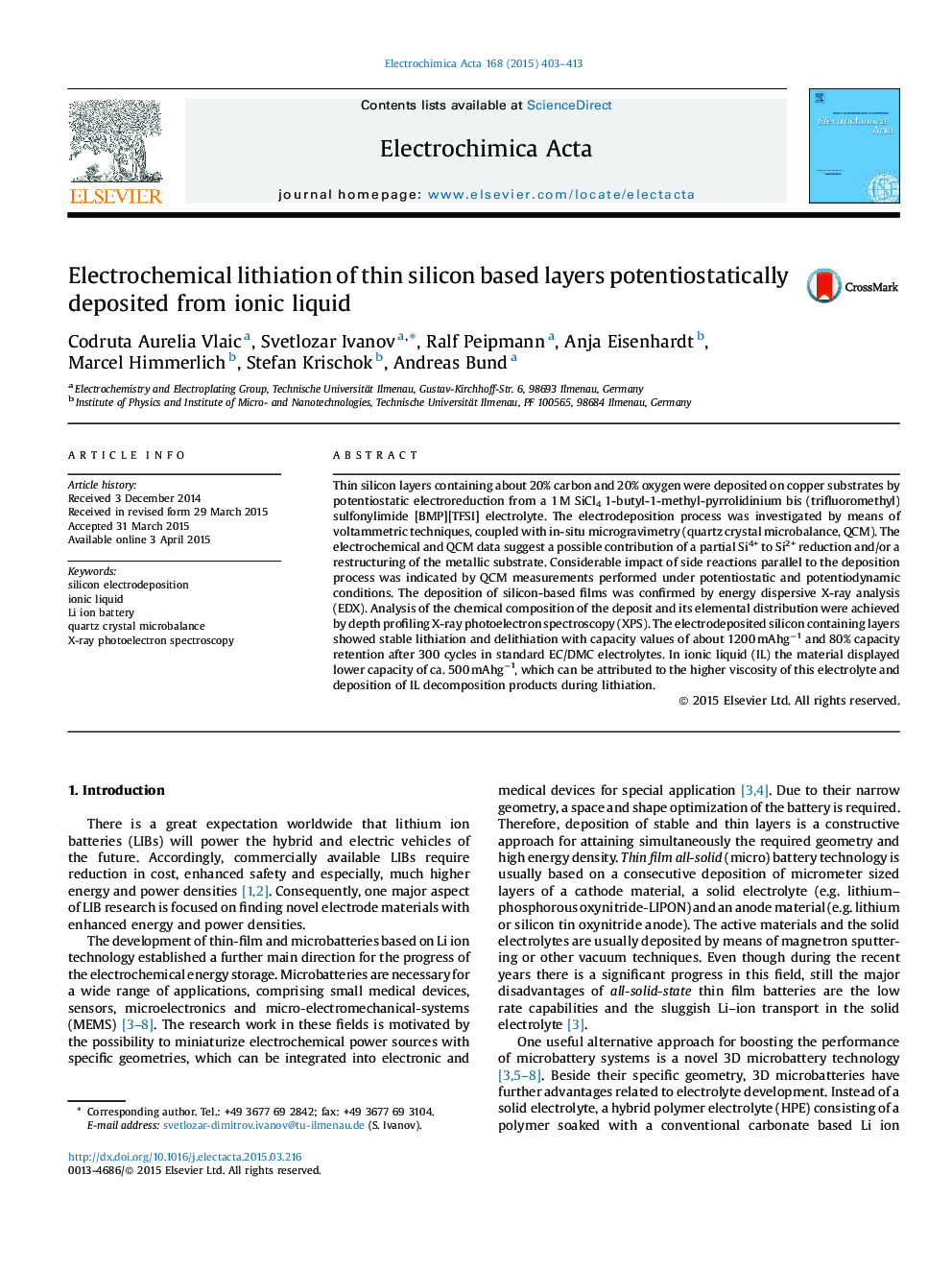| Article ID | Journal | Published Year | Pages | File Type |
|---|---|---|---|---|
| 184261 | Electrochimica Acta | 2015 | 11 Pages |
Thin silicon layers containing about 20% carbon and 20% oxygen were deposited on copper substrates by potentiostatic electroreduction from a 1 M SiCl4 1-butyl-1-methyl-pyrrolidinium bis (trifluoromethyl) sulfonylimide [BMP][TFSI] electrolyte. The electrodeposition process was investigated by means of voltammetric techniques, coupled with in-situ microgravimetry (quartz crystal microbalance, QCM). The electrochemical and QCM data suggest a possible contribution of a partial Si4+ to Si2+ reduction and/or a restructuring of the metallic substrate. Considerable impact of side reactions parallel to the deposition process was indicated by QCM measurements performed under potentiostatic and potentiodynamic conditions. The deposition of silicon-based films was confirmed by energy dispersive X-ray analysis (EDX). Analysis of the chemical composition of the deposit and its elemental distribution were achieved by depth profiling X-ray photoelectron spectroscopy (XPS). The electrodeposited silicon containing layers showed stable lithiation and delithiation with capacity values of about 1200 mAhg−1 and 80% capacity retention after 300 cycles in standard EC/DMC electrolytes. In ionic liquid (IL) the material displayed lower capacity of ca. 500 mAhg−1, which can be attributed to the higher viscosity of this electrolyte and deposition of IL decomposition products during lithiation.
